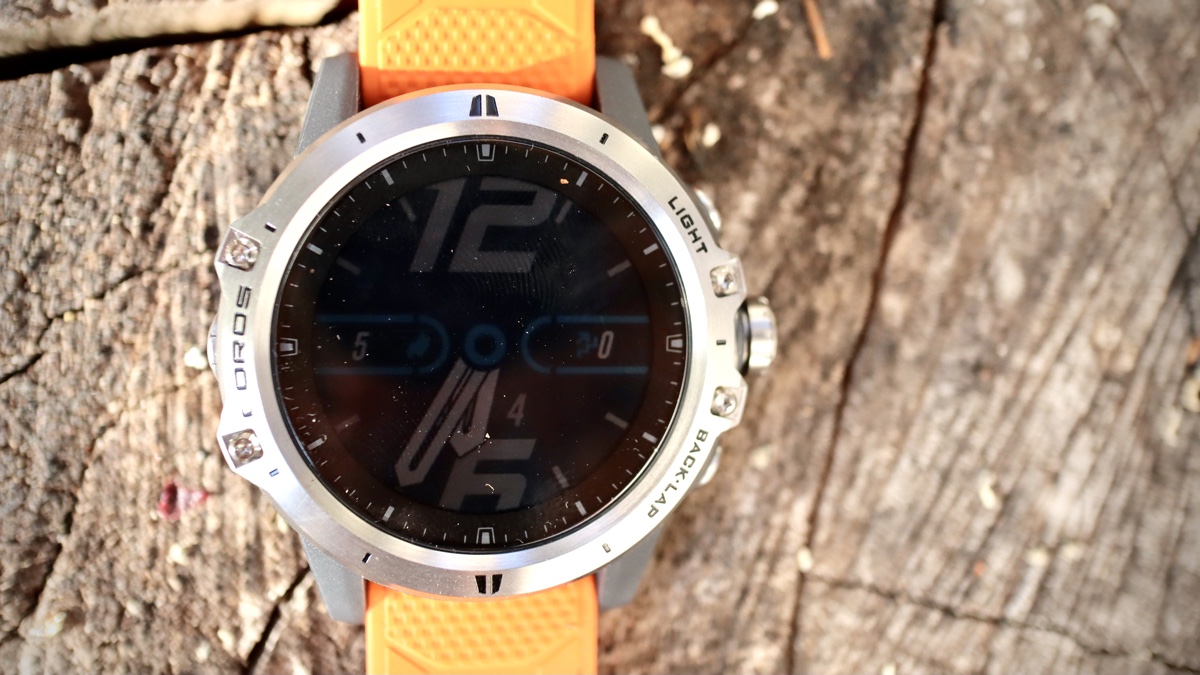There is a mossy rock wall near the house where I grew up in northern New Jersey. At the start of my runs, I would jog up the driveway, turn left and ascend a hill, turn right and ascend another hill, turn left again, turn right to ascend a third hill, make another left, and then cruise up and down some rolling slopes past the mossy rock wall. The rock wall was in the throes of erosion, being overtaken by moss, and it showed signs of being walloped a few too many times by snowplows in the winter. It served as my benchmark. At peak fitness, it would take me 14 minutes to reach the wall, and when I could do that, I knew I was ready to compete.
I have no precise knowledge of how far away the rock wall was from my house, or how much vertical gain I collected on those hills. I am not sure how long any of my normal routes were or how much elevation gain and loss they contained because, when I lived in New Jersey, I did not own a GPS running watch. I only knew roughly how long it took to run each route in the conditions of summer, spring, and fall. I knew which routes to avoid during bear season, and I knew how much harder the climbs felt when I was coming off of basketball training in the winter. I knew that if I could make it to the mossy rock wall in 14 minutes, my competitors needed to watch out, and this was all the precision that I needed for racing confidence as a kid.
The Middle Term
Like most people, I often wonder about how technology has transformed my relationship to running. First, there is my GPS watch. While I run, I see splits and receive information about inclines and heart rate. On familiar routes, I know where I should be at a given time, and I can compare my efforts, not just to my personal history on these routes, but also to anyone else with a GPS watch who has run there. My husband often remarks that, when we run together, we are not alone. We are also running with all of the versions of me who ran there in the past and left a digital shadow. This is true. I can become somewhat abstracted from the current moment and start reflecting on what the statistics mean while I am still in the process of running them.
There are also performance-supporting and (legal) performance-enhancing technologies available, more so than in the past. In high school, I often ran in oversized soccer tournament t-shirts and basketball shorts, and I wore a pair of low-technology adidas shoes I adored for style reasons. I ran in them until they felt like flat tires and the tongues fell out, and my mom convinced me to buy new ones. Today, my clothes are made of technical fabrics, and I have a stable of fast sneakers for various kinds of workouts. And, yes, I am aware that my high-school Asics count as technology, and that—even tongueless—they are more sophisticated than the shoes of former times. But our sneaker choices did not assert themselves on the cross-country course as worthy of attention in the way they do now because they did not conspicuously alter the relationship between our efforts and outcomes.
Today, many runners wear carbon-plated shoes and spikes, and track athletes have benefitted from wave light technology, or electronic pace-setters to help runners to mete out their efforts evenly in record attempts. Nutrition and supplementation have advanced. Track surfaces have improved. Training methodologies have matured. And all of these things mediate our participation in sport. Stated differently, technology has become the middle term between athletes and the sport, perhaps in an irrevocable way, for good and for ill.
The Good and the Bad
There are obvious benefits to all of these advancements. GPS watches offer us accountability for our training. They help us to be more objective about our performances, and athletic social platforms afford us opportunities to share our training for inspiration and the mutual edification of peers. We would not have these things if it were just us and our respective mossy rock walls, trying to guess whether we are fit. Moreover, the new technologies are not inherently objectionable. Carbon-plated sneakers are renewing interest in the sport, both for participants and spectators, because it is fun to run quickly, and it is exciting to watch people excel. Improved nutrition is a welcome idea for everyone, not just for athletes, so we should not stymie that progress either. Furthermore, if the alternative to making fast-surface tracks is to intentionally make slow tracks, I am not sure why we would do that. Lastly, wave light pacing seems resourceful, rather than problematic in any obvious way. All of these changes, on some level, are welcome.
That said, I think there are two kinds of dangers in the shifting role of technology in our sport, which I am going to call:
- drugstore athlete, and
- loss of the creature.
Drugstore Athlete
“Drugstore Athlete” is the name of a well-known New Yorker by Malcolm Gladwell. In it, Gladwell draws on the intuition that not all achievements are equally admirable. Part of what we admire in an excellent person is the hard work it took to become so—on an athlete’s own terms, rather than through artificial means. Performances that are achieved through steroids, for example, lack the same luster.
I point this out because, when we allow technology to assert itself as the middle term between the athlete and his or her performance, we deflate the athlete’s efforts in the order of importance. The athlete becomes almost obligated to enter the arena with baggage—the right kinds of shoes, for example, rather than just entering on his or her own terms. This is a threat to the egalitarian character of our sport, since you need to have “stuff” to perform on a high level. (To the extent that our sport can reasonably be expected to be egalitarian, since we have unequal natural abilities.) It is also a threat to the central aspiration of competitive athletics—to get the best out of oneself, full stop. The goal is not to get the best out of the version of oneself aided by 2021’s current set of enhancement objects, only to be outdone by whatever 2022 has in store. It is to excel in terms of one’s nature. It seems to me that not all technologies conspicuously alter this central aspiration, but I think some of the new sneakers do. This is because improvements, even with respect to an athlete’s own personal history, are being obscured by the imposition of carbon. It is hard to know if we are getting the best out of ourselves if we can’t compare ourselves to our former selves.
Loss of the Creature
This is the problem of abstraction, or mediation.
Walker Percy has an essay called “The Loss of the Creature” in his book, The Message in the Bottle. He imagines the first person who happens upon the Grand Canyon. This person is in awe. He takes photographs. Thereafter, other tourists see photographs and arrive with expectations of what the Grand Canyon will be like. They lose the authentic, unmediated experience. They see the Grand Canyon through the lens of the “symbolic complex which has already been formed in the sightseer’s mind (1),” and they desire that their experience conform to their expectations.
This captures the way I use my GPS unit. It positions me to be less present, and to find less enjoyment, in my daily runs, since I observe my running through the lens of statistics and expectations. To be clear, the kind of mediation a gadget affords can be helpful. For example, the unspeakably steep hill I run by my university is—through the lens of my technology—a speakable 550 feet in 0.5 miles. The slope is knowable, and its metrics are not unprecedented. I know I can run it. But I also wonder how technology has restricted my vision of what I am doing, since data is only a partial explanation of a run. I wonder what I fail to see when I perceive running through the set of metrics my gadgets afford me, and wonder whether I need to leave my watch at home if I want to be more present, or less abstracted.
Final Thoughts
To be clear, in raising these considerations, I am not calling for a return to the kind of naïve, mossy rock wall running I did as a kid. That does not seem like a fitting solution to my concerns. And while technology has changed my relationship to running, I think these changes have been mostly positive overall. Still, it is worth examining the consequences of technology in our sport—some of which compromise the integrity and value of what we are out there doing in our sneakers. These conversations are especially important now, when the advancements at play seem to be having a considerable impact on performance.
Call for Comments
- How do you think technology has positively (and legally) enhanced your running experience and/or performance?
- Have you experienced negative aspects to running technology?
References
- Percy (1975). The Message in the Bottle. New York: Picador, p. 47.

